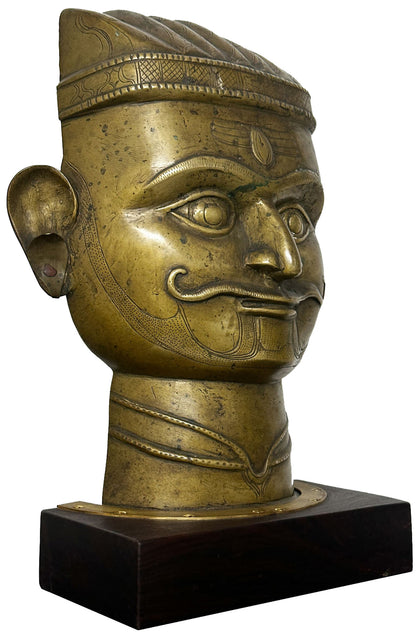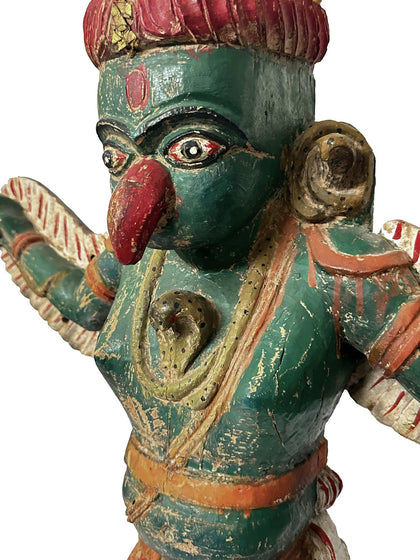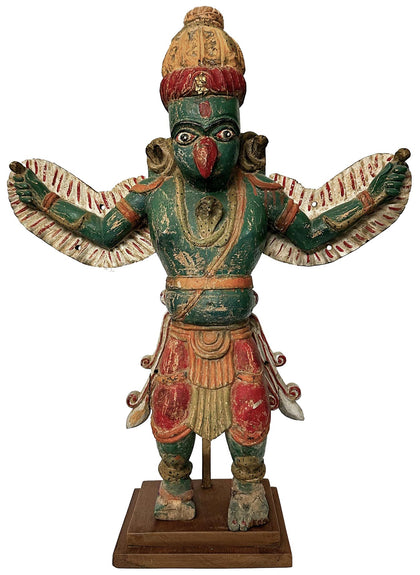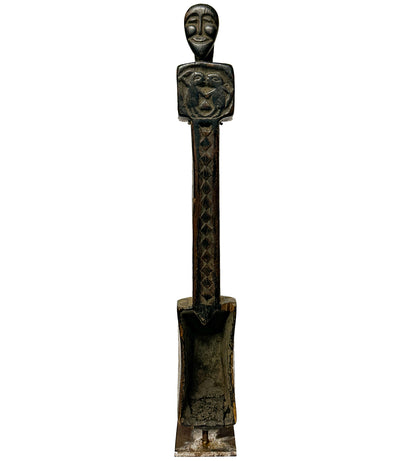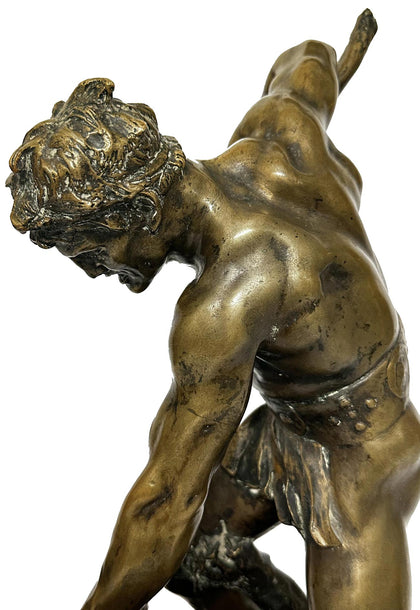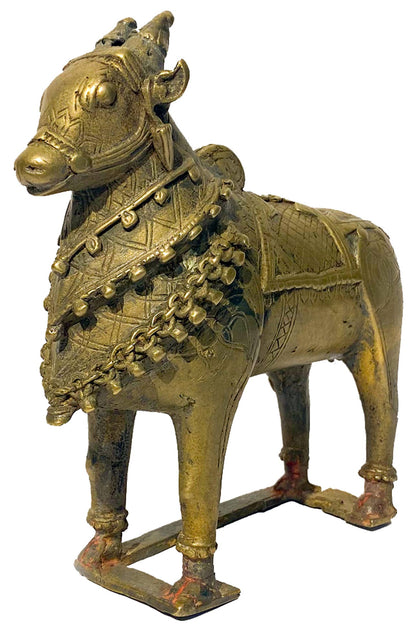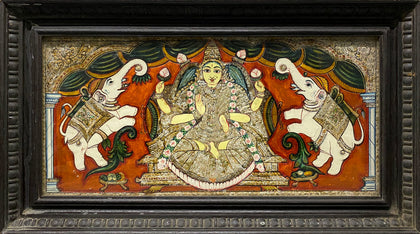This is an extremely rare, cast bronze and engraved aquamanile as a zoomorphic fish, from North Karnataka. An aquamanile was a ewer or jug-type vessel (usually for water) in the form of one or more animal or human figures. This piece is cast in the round as a fish, with scales engraved across its body, sitting on a flared foot. At the top of the body is an engraved lotus with a raised button centre. The faceted handle has two parakeets on either side and a raised rectangular opening at the top to fill the ewer. This opening would probably have a lid but is now lost. Out of the mouth issues the S shaped spout, with a base of an open mouthed yali with a trunk like a hooded cobra. It is extremely rare to find a fish shaped ewer (one other fish shaped ewer did appear at Christie's). Mughal and Deccan aquamaniles in bird shapes, usually a Hamsa were far more common. There are reference images in Mark Zebrowski's "Gold, Silver and Bronze from Mughal India", as well as Christie's and the Met Museum.
“One of the most characteristic objects of daily life throughout the Islamic world is the ewer…,” says Zebrowski. Furthermore “in the hot climates of India and the middle east, this water bearing vessel had great importance.” These were for both religious as well as utilitarian purposes and appear often in miniatures, art and architecture. In Deccan and Mughal culture, it is thought that ewers would have been used to pour scented water for guest to wash their hands. The ewer is generally thought to have evolved in Iran and spread to India but Zebrowski feels there is some evidence that this may have been the other way round. He cites an earlier dated example found in a temple from 1415.
The fish is a common motif in Indian art; in Hinduism it is the form taken by Matsya, fish avatar of Vishnu, while in Islamic India, the fish was an emblem of the Shia Kingdom of Oudh (Avadh), appearing on flags, heraldry and coinage. Vessels in the form of birds and animals from India can best be understood in the context of comparable objects made centuries earlier in the Middle East (Zebrowski, 1997, p. 95). Generally, zoomorphic figures made in India and the Middle East served as ewers, incense burners, decorative finials and oil lamp reservoirs. In India, such vessels represent a rare tradition of non-religious figurative art from a period when realistically rendered animal forms generally were avoided on account of Islamic prohibitions on idolatrous imagery, certainly in north India at least. Cast brass and bronze zoomorphic ewers and lamp finials from South India can be seen to share the Middle Eastern Islamic antecedents of similar pieces from Mughal and Sultanate India.
This piece is accompanied by a certificate of authenticity.




















































































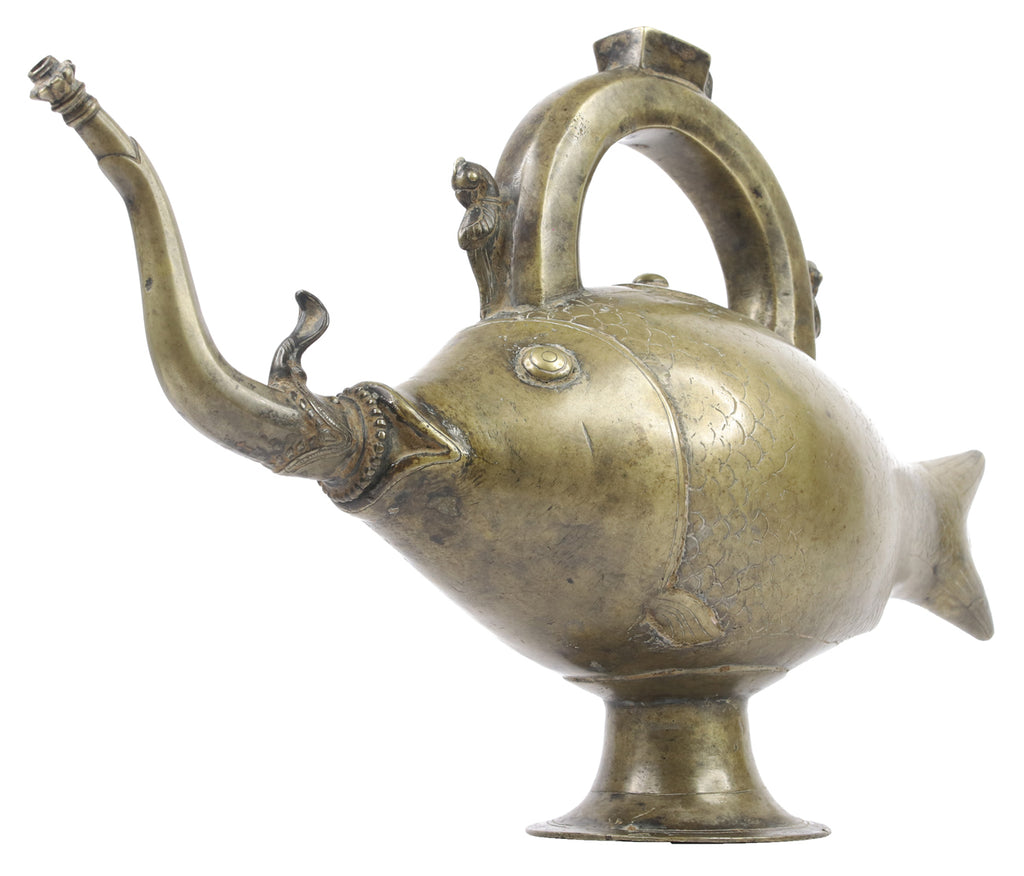
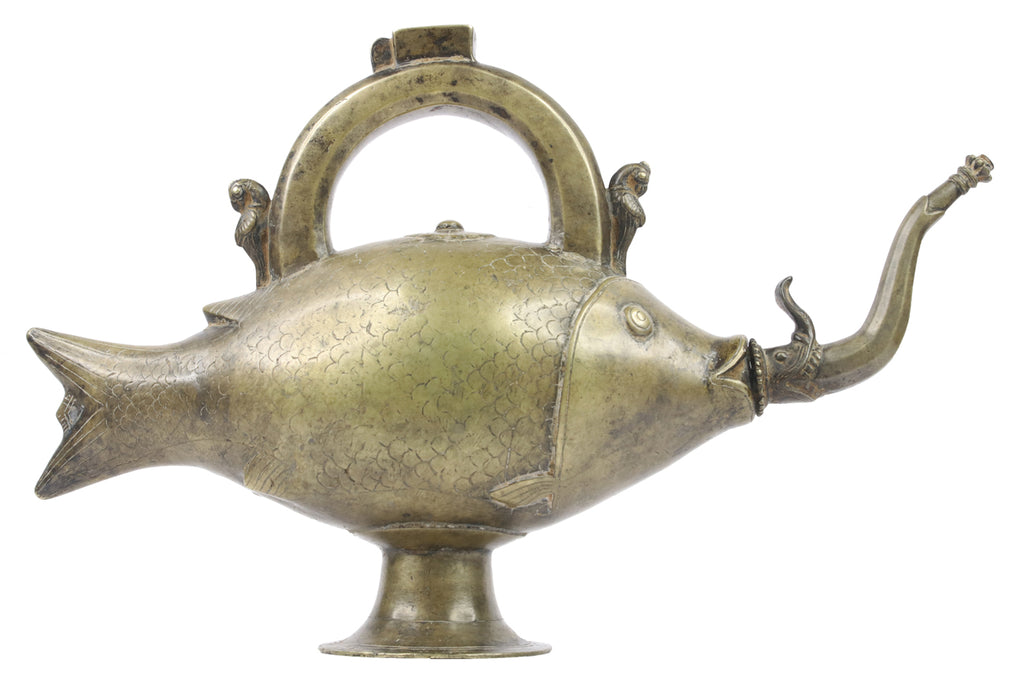


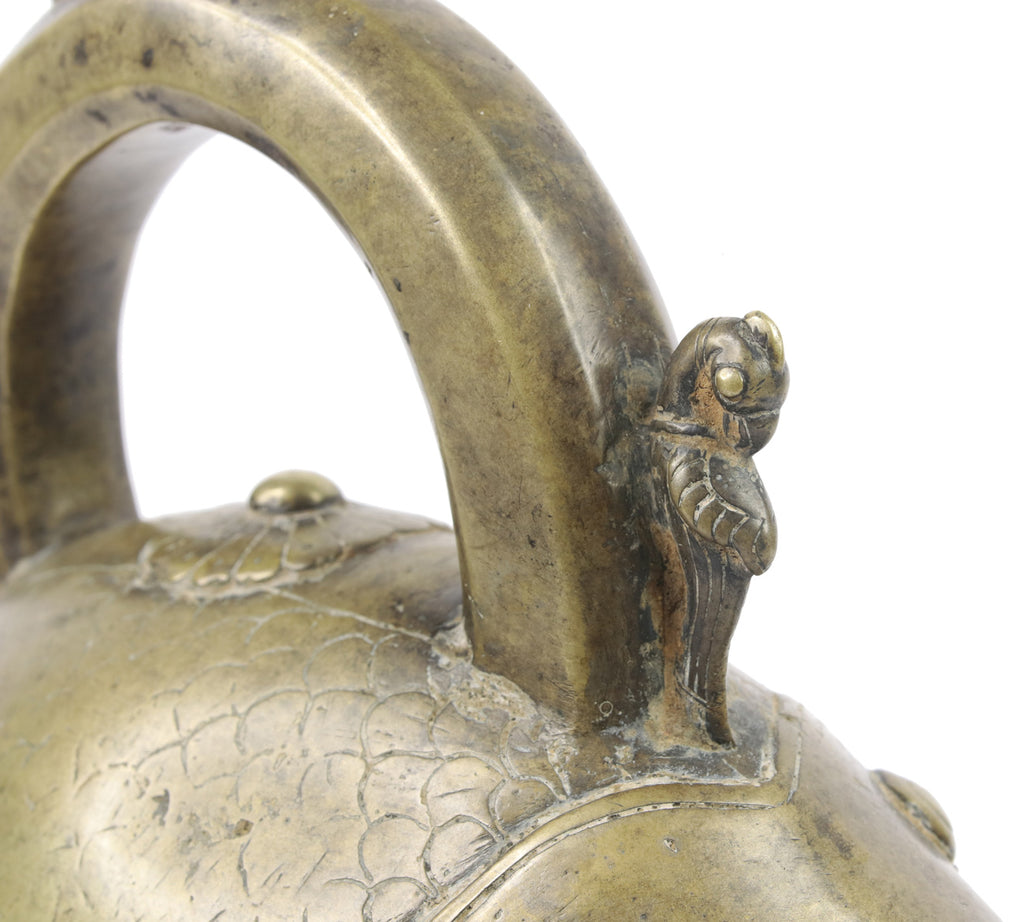


 View Full Screen
View Full Screen


